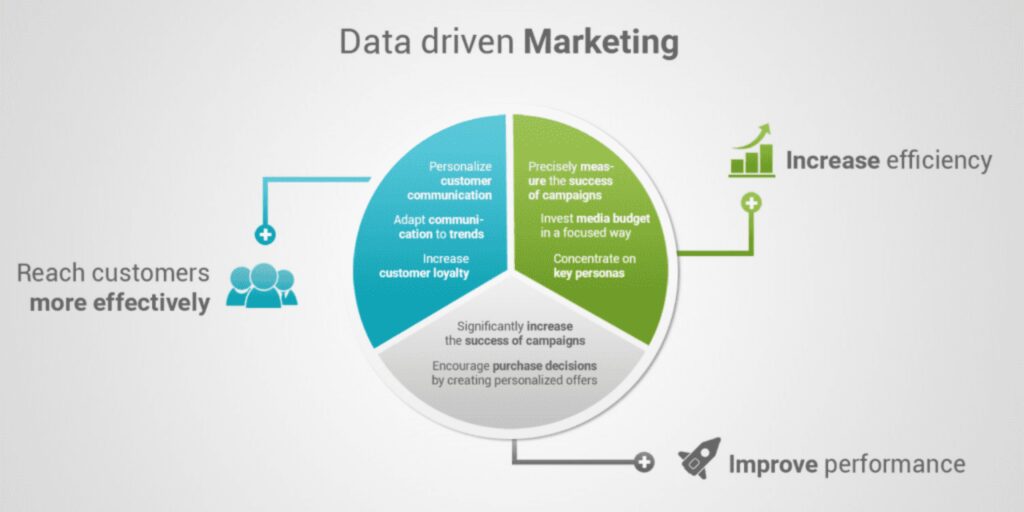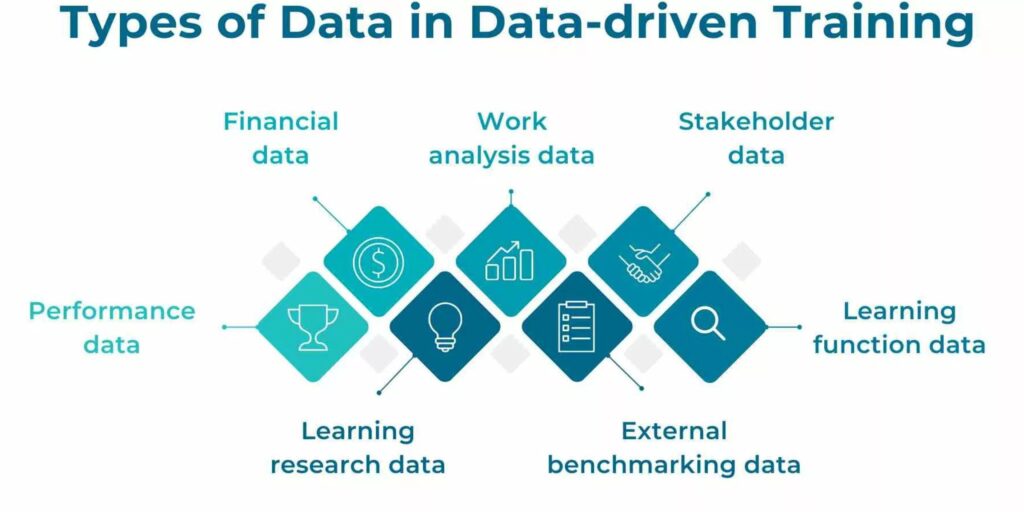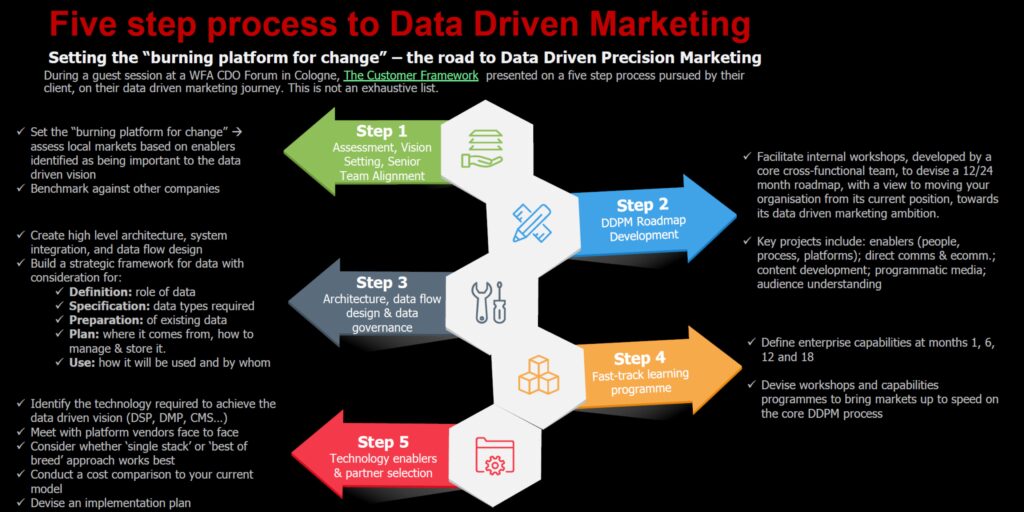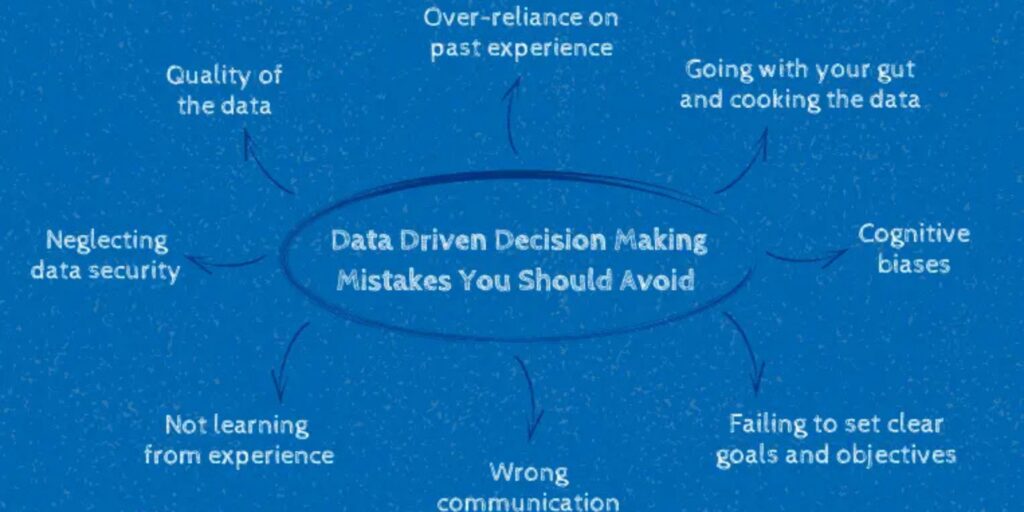Data-Driven Marketing: How To Create Winning Strategies With Analytics
Marketing is no longer guesswork or intuition in today’s fast-evolving digital era—it’s data. With the emergence of big analytics, businesses can now leverage a wealth of customer data and behavior patterns that were out of reach before. Data-driven marketing has been the answer to opening the door to more intelligent, effective strategies that bear quantifiable results. Whether it’s to enhance customer engagement, customize messages, or optimize campaigns, data is the ultimate marketing weapon for marketers who need to outsmart the pack. In this blog, we’re going to talk about how you can leverage the strength of analytics and develop effective marketing strategies that not only meet but exceed your business goals. Welcome to the age of data marketing, where all decisions are backed by facts, and all strategies are fact-based.

What Is Data-Driven Marketing?
Data-driven marketing is the use of data analysis and insights to guide and optimize marketing decisions, campaigns, and customer interactions. Marketers no longer rely on guesswork or intuition but rather use quantitative data—gathered across multiple touchpoints including websites, social media, customer interactions, and sales transactions—to derive insights about customer behavior, trends, and preferences. This is a method through which companies are able to create highly targeted, bespoke campaigns which resonate with their audience, leading to more successful marketing and enhanced return on investment (ROI).
Through a look at statistics such as demographics, shopping patterns, levels of engagement, and social behavior, businesses can drive informed choices for how they should tailor their communications, invest dollars, and pursue new markets of opportunity. Effectively, data-driven marketing helps marketers break from mass, homogenous campaigns to create extremely relevant, up-to-the-moment efforts that respond to the special requirements and affinities of their constituents.
The Importance Of In Analytics In Marketing
Marketing analytics is important as it helps organizations assess, monitor, and comprehend the performance of their marketing initiatives, thus making better-informed choices and optimizing results. With analytics, marketers can make informed decisions about customer behavior, campaign efficiency, and trends in the market, which are all very vital in terms of maximizing marketing efforts.The following are crucial reasons why analytics is so important in marketing:
1. Data-Driven Decisions: Analytics enables marketers to break free from guesswork and make decisions based on solid data. Whether deciding when to post on social media or understanding which ads result in the most conversions, analytics gives evidence to support every decision.
2. Customer Insights: By analyzing data, marketers are better able to understand the preferences, interests, and pain points of their audience. This enables more segmented, personalized campaigns that actually talk to the needs of specific customer segments.
3. Better ROI: Marketers can gauge which strategies are effective and which are not by monitoring key performance indicators (KPIs) like conversion rate, customer acquisition cost, and lifetime value. This allows them to invest their resources in the most efficient channels and maximize their marketing expenditure.
4. Campaign Optimization: Analytics enables real-time monitoring, so marketers are able to watch campaigns and optimize them in the moment. Using A/B testing, split testing, and performance metrics, companies can refine their efforts continually for optimal results.
5. Predictive Analytics: Marketers can forecast future trends, customer actions, and market changes through analyzing past information. This helps companies get one step ahead of the competition by making proactive strategy changes.
analytics is the cornerstone of marketing today, aiding businesses in measuring success, streamlining strategies, and implementing more targeted, effective, and profitable campaigns.

Types Of Data Used In Data-Driven Marketing
In data-driven marketing, different types of data are gathered and analyzed to support decisions and campaign optimization. Such data types help reveal customer behavior, preferences, and trends, allowing companies to develop more targeted and personalized marketing strategies. The following are the principal types of data utilized:
1. Customer Demographics: These are fundamental data about customers including age, gender, location, income level, education, and occupation. These demographic data allow marketers to know who their customers are and present messages to defined audience segments.
2. Behavioral Data: This information measures how customers behave with a brand on various channels. It captures website visits, click-throughs, page views, browsing, and email or ad interactions. Behavioral data helps marketers determine the intent and interest of customers and use this for personalization and optimizing user flows.
3. Transactional Data: It records information on customer purchases like the product purchased, frequency of buying, cost of purchase, and payment. Transactional data assists companies in identifying the buying habits and customer interests and can be used in cross-selling, up-selling, and customer targeting.
4. Social Media Insights: Data from social media platforms (i.e., engagement, comments, shares, likes, sentiment analysis metrics) reflect how consumers interact with and comprehend a brand. Social media metrics help marketers in understanding the sentiment of their audiences, spotting trends, and creating more interactive content.
5. Customer Feedback: This comprises immediate feedback from customers in the form of survey responses, reviews, ratings, and interactions with customer service. Feedback data gives insights into satisfaction levels of customers and areas where improvement is needed, enabling companies to refine products, services, and marketing strategies.
By merging and examining these various forms of data, companies are able to establish a complete view of their consumers and develop very targeted, efficient marketing campaigns.
Tools And Platforms For Data-Driven Marketing
To successfully execute data-driven marketing, companies depend on a range of tools and platforms that are intended to gather, analyze, and utilize data insights. These tools enable marketers to make data-driven decisions, maximize campaigns, and track performance in real-time. Some of the most widely used tools and platforms in data-driven marketing include:

1. Google Analytics: A complex and widely used tool for tracking website traffic user activity and conversion rates. Google Analytics generates essential insights into how people use a site, enabling marketers to optimize content and enhance user experience.
2. Google Analytics: A robust and popular tool for monitoring website traffic, user actions, and conversion rates. Google Analytics offers great insights into user behavior on a site, and marketers can use this to better optimize their content and enhance user experience.
3. SEMrush: An SEO and competitive analysis tool that allows marketers to monitor keyword rankings, examine website traffic, and uncover opportunities for growth. It delivers data to back search engine optimization and content marketing efforts.
4. Salesforce: A top CRM solution that enables businesses to gather and analyze customer data from every touchpoint. Salesforce allows marketers to monitor customer interactions, segment audiences, and customize campaigns for enhanced engagement and sales.
5. Mailchimp: A widely used email marketing solution that offers analytics on email campaigns such as open rates, click-through rates, and conversions. Mailchimp facilitates optimization of email marketing strategies by organizations based on actual performance data.
6. Social Media Analytics Tools (Sprout Social, Hootsuite, etc.): These tools help marketers track engagement, sentiment, and audience growth across social media platforms. They provide data on likes, shares, comments, and mentions, helping businesses fine-tune social media campaigns and improve customer engagement.
With these platforms and tools, marketers can effectively collect, analyze, and use data to create more targeted, personalized, and effective marketing efforts.
Step To Build A Data-Driven Marketing Strategy
Developing a data-driven marketing strategy entails systematically gathering, analyzing, and utilizing data to maximize marketing efforts and achieve improved results. The following are the necessary steps to develop an effective data-driven marketing strategy: Learn more about how data-driven marketing can transform your strategy with these expert tips and tools.

Step 1: Define Your Goals And KPIs
Start by establishing specific, measurable objectives that tie back to your overall business mission. These might involve driving more website traffic, enhancing sales, or enhancing customer retention.
Determine the Key Performance Indicators (KPIs) that will measure progress toward these objectives. Typical KPIs are conversion rates, click-through rates (CTR), customer acquisition costs, and return on investment (ROI).
Step 2: Collect And Organize Data
Collect information from different sources such as your site, social networks, CRM platforms, email newsletters, and consumer feedback. Collect both qualitative and quantitative information so that you are getting a comprehensive picture of your audience.
Systematize this information in one system or database so that you can analyze it easily. Data can be cleaned and normalized so that consistency and accuracy is present in all channels.
Step 3: Analyze Data For Insights
Use analytics tools (such as Google Analytics, HubSpot, or Salesforce) to analyze the data you’ve collected. Look for patterns and trends in customer behavior, such as which content or products are most popular, when your audience is most engaged, and what triggers conversions.
Segment your audience based on different criteria (demographics, behavior, etc.) to identify high-value groups that could benefit from targeted campaigns.
Step 4: Create Buyer Personas
Construct comprehensive buyer personas based on what your data is telling you. These personas are the various segments of your audience, describing primary demographics, interests, pain points, and buying habits.
Utilize personas to realize why customers make certain decisions and ensure that marketing efforts are in place to specifically address the requirements of each segment.
Step 5: Personalize And Segment Campgains
Use the data and personas to develop targeted marketing campaigns for every segment. This may involve personalized email marketing, dynamic web content, or social media advertising.
Segmenting your audience allows you to customize messaging that addresses their interests and needs directly, enhancing the likelihood of engagement and conversion.
Step 6: Report And Adjust Strategy
Continuously report on your marketing performance and compare results with your goals and KPIs. This will enable you to gauge the success of your data-driven strategy and areas for optimization.
Refine your strategy based on the data and insights you accumulate over time. Data-driven marketing is a continuous process of learning, testing, and optimizing to get the best results.
By doing this, companies can craft a solid data-driven marketing plan that is progressively optimized for its performance and based on customer demand. This technique guarantees that campaigns are not merely successful but likewise founded on present-time trends and insights, creating more success over the long-term.
Challenges In Data-Driven Marketing And How Overcome Them
While data-driven marketing has a lot of benefits, it also has its own list of challenges. Knowing these challenges and how they can be overcome is critical to being successful with data-driven marketing. Following are some typical challenges and how to overcome them:

1. Data Overloaded
Solution: Prioritize gathering only the most important data that supports your marketing objectives. Apply data management platforms or tools (e.g., Google Analytics, Tableau) that have the capability to sift and arrange data more effectively. Utilize data segmentation and identify top-level metrics or KPIs that directly influence your strategy.
Challenge: Marketers usually deal with a vast quantity of data from various sources websites, social media, email marketing, CRM, etc. Separating this enormous quantity of data to derive actionable insights is a time-consuming and challenging task.
2. Data Quality And Accuracy
Challenge: Data integrity is important, but companies usually have problems with bad data that is inaccurate, incomplete, or outdated. Bad data can result in poor decisions, leading to ineffective campaigns.
Solution: Clean and refresh your data on a regular basis to make it accurate. Have data validation procedures in place to minimize errors and inconsistencies. Utilize automated data cleansing tools, and get your team to adopt best practices for data entry and handling.
3. Integration Of Data From Multiple Sources
Challenge: Data tends to live in other systems—CRM, email marketing tools, social media platforms, etc.—so it’s difficult to gain a connected view of your customer. Without integration, it’s tough to look at data in aggregate and make coherent strategies.
Solution: Use integration tools and platforms that integrate data from several sources (e.g., Salesforce, HubSpot, Zapier). This will build one uniform, complete picture of your customer and enable richer analysis and more coordinated marketing initiatives.
4. Privacy And Data Security Concern
Challenge: As there is more data privacy concern (e.g., GDPR, CCPA), the marketer has to find his/her way through customer data collection and utilization ethically and legally. Data protection regulation violations can cause penalties and reputational loss to your brand.
Solution: Keep yourself aware of data privacy laws and make sure that your data collection activities are compliant. Take explicit permission from customers prior to collecting or using their information. Implement strong security controls to safeguard sensitive data and train your staff on data protection best practices.
5. Budget Constraints
Challenge: Having and sustaining a data-driven marketing approach is an investment in tools, technology, and trained staff. Budgetary limitations may restrict some companies from taking full advantage of data-driven marketing.
Solution: Prioritize your investments, and invest them in the areas of your strategy that will be most impactful. Begin small and focus on essential tools that generate the most value, like Google Analytics for tracking the web or an email system for segmentation. Find low-cost solutions or utilize free tools in order to provide the means of gathering and analysis of data.
Start using data-driven marketing today to craft personalized strategies and boost your campaign results! Take action now!
Conclusion
Data-driven marketing is a huge opportunity for companies to make data-driven decisions and optimize their approach. But the reality of data overload, quality, integration, privacy issues, and skill shortages are genuine challenges. With the appropriate tools, attention to data relevance, compliance, and ongoing training of teams, companies can break through these challenges and unlock the full potential of data to inform better marketing results.



